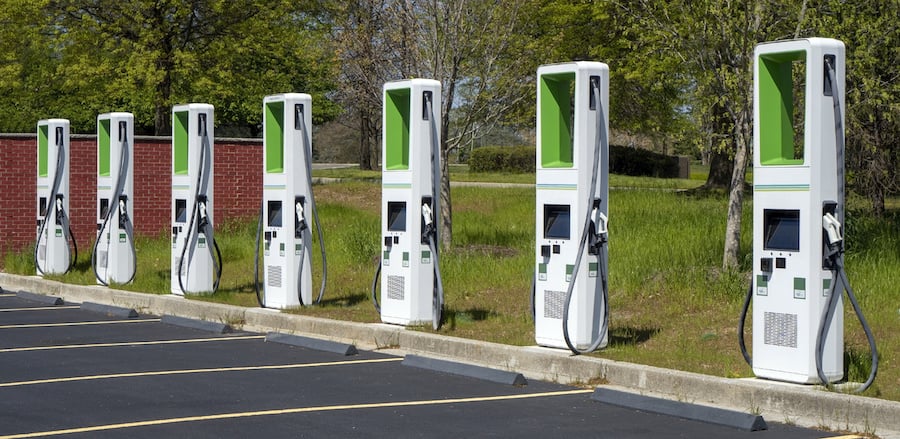Industry is no longer the same. Many consumers, investors, and stakeholders want to work with businesses that align with their values. So, for these people and institutions, the trend towards ESG (Environmental, Social, and Governance) is important.
According to the Impact Investor, “Integrating environmental, social, and governance factors leads to better sustainability, generates positive social impact, and makes good business sense.”
But how? We’ll get to that a little later.
Luckily, you don’t have to overhaul your entire operations or policies to be considered ESG compliant. Instead, look at how your commercial real estate qualifies for the standards. You’ll find that the CRE sector provides a solid opportunity to boost your ESG prowess. (Without even having to make any other changes to your business).
Since commercial real estate is such a big part of corporate spending, adopting ESG practices here will hugely influence your overall sustainability and social environment. So, learn how the environmental and social aspects of ESG can play into your corporate real estate (and the best methods to integrate them for your EBITDA).
Environmental Considerations for Your CRE
Integrating the Social Aspect of ESG in Your CRE
The Benefits of Implementing ESG in Your CRE
Environmental Considerations for CRE
Adopting environmental practices into your CRE can be the basis of integrating ESG because there are so many opportunities to do so. For example, green goals for your leased properties may include:
- Increasing energy efficiency
- Increasing the sustainability of sourced materials
- Returning to carbon neutrality
- Improving air quality and efficiency of water use
- Adhering to business hours that reduce electric consumption
- Creating a certain number of charging stations for electronic vehicles
- Adopting LEED standards to earn certification
Let’s start with how this may affect your operating expenses. Reducing your carbon footprint in relation to your OpEx is a double-edged sword. First, it will save you money since “A majority of such (commercial real estate) buildings waste from 10% to 30% of their energy output,’ according to CFO Magazine.
So, not only will improving the efficiency of your OpEx save money and cut waste, but by lowering emissions, you may also attract new investors. According to a 2018 U.S. Trust survey,
|
87% of millennial investors believe ESG investing should play a strong role in deciding which companies to invest in. |
The tide is turning towards sustainability (and if you want to attract stakeholders- you better go with the flow).
Enforcing Green Standards in Commercial Real Estate
Not only this, but certain municipalities are beginning to enforce programs that crack down on businesses that don’t apply green standards to their CRE. For example, if we look at the New York City Climate Mobilization Act, buildings that exceed 25,000 feet will need to reduce their greenhouse gas emissions by 40 percent by 2030.

But it’s not only happening in NYC or other blue cities like Boston; green standards are being pushed worldwide. “In Europe, for example, some building owners are being socked with valuation discounts of 10% to 30% if they don’t have a credible decarbonization forecast in their financial statements,” according to CFO Magazine.
Now consider such a law would affect you as a tenant. Going forward, corporate tenants should be aware of how landlords would look to offset their responsibility to pay for these costs. Whether this means caps on individual OpeX or additional charges on your rent, it may cost you big to not get ahead of sustainability regulations.
With the emerging importance of integrating LEED standards in both new and old CRE properties, the trend towards sustainability is here to stay. This is especially true since it was discovered by McKinsey & Company that:
|
“Commercial real estate generates 39% of the global emissions total.” |
With such a significant contribution, the government will not likely be letting up any time soon on enforcing environmental practices. So, it’s best to get ahead and integrate practices now instead of being legally enforced or hit with extra costs from your landlord down the line.
Integrating Green Practices According to Your Employees’ Lifestyles
When integrating sustainability practices in your CRE, consider they have affected the way people live and work (and commute). For example, it is now ubiquitous to see electronic vehicles on the road. So, make sure they have spots in your parking lot.
Providing adequate E.V. parking or charging will also earn you points toward your LEED certification.
For example, consider this excerpt from the U.S. Green Building Council. It states that businesses must do the following:
“Install electrical vehicle supply equipment (EVSE) in 2% of all parking spaces used by the project or at least two spaces, whichever is greater, for 1 point. Install electrical vehicle supply equipment (EVSE) in 4% of all parking spaces used by the project or at least four spaces, whichever is greater, for 2 points. Clearly identify and reserve these spaces for the sole use by plug-in electric vehicles. “

We actually think the above number is low considering the rapid adoption of EVs. We recommend pooling your employee base to see how many are considering buying an EV over the next five years.
So, providing sufficient charging stations and infrastructure will not only make your more innovative employees happy, but qualify you for LEED and other notable certifications.
The Social Aspect of ESG in Your CRE
To meet the social objectives for ESG criteria, a company must provide a safe and healthy working environment for its most important asset, its people. This involves analyzing how corporations provide support to meet the needs of employees, stakeholders, and beyond.
So, where better to integrate this than in your commercial real estate?
For starters, you can eliminate the notion that offices should provide 100-150 square feet per person. Allocating significant space to your employees (at least 200 sq. ft.) goes a long way to solidifying your brand as a company that cares about its people and communities.
Squeezing people into cramped working environments to get every last drop of your CRE $ is no longer practice. In a post-COVID world, part of ensuring workplace safety is giving your employees sufficient room to function without fear of spreading infection. Health and wellness are now primary concerns in creating layouts that consider the needs of people.

Not only does cramming your team into a small space deny your employees’ right to work in a safe, comfortable environment, but it also hurts your ability to recruit and sustain great talent. The workforce has changed, and people don’t want to work for employers that don’t consider their social wellbeing.
Additionally, social metrics for ESG consider inclusion. This means not only encouraging diversity but creating spaces where special needs are considered and the playing field is level. For your CRE, this may mean providing ramps at entrances or adequate handicap parking. According to the Americans with Disabilities Act, lots should provide (at least) 1 handicap spot for every 25 parking spots.
Creating accessible environments is key to the social inclusion of your commercial real estate.
The Benefit of Adopting ESG Practices in Your CRE
The emerging presence of ESG reflects the evolving standards of business and investment. Companies that get ahead of ESG standards have a lot to gain.
According to Betsy Atkins of Nasdaq,
|
“A robust ESG program can open up access to large pools of capital, build a stronger corporate brand and promote sustainable long-term growth benefiting companies and investors.” |
In fact, the numbers support the positive financial impact adopting ESG practices can have on an organization. A study NYU conducted from 2015-2020 found a “50% positive relationship between corporate financial performance and ESG.”
Commercial real estate is such a great place to start working with ESG because there are so many opportunities to do so. Since corporate real estate is typically a business’ second top cost, adopting green standards here is an efficient way for companies to put their money where their mouth is.
Making adjustments to your CRE will significantly improve your ESG performance without having to deconstruct and rebuild your policies and production with a new mindset. If you need help knowing where to start, you can always work with a Tenant Rep. At iOptimize Realty®, we are Tenant Reps with over three decades of experience protecting the interests of our corporate clients. We have observed how CRE expectations have changed in recent years and how savvy tenants can save big by capitalizing on the trends. So, don’t waste any more time.
If you want to speak to a Tenant Rep yourself, learn how you can save millions today.
To learn more about the future of commercial real estate and green standards, check out this article on LEED certification.








